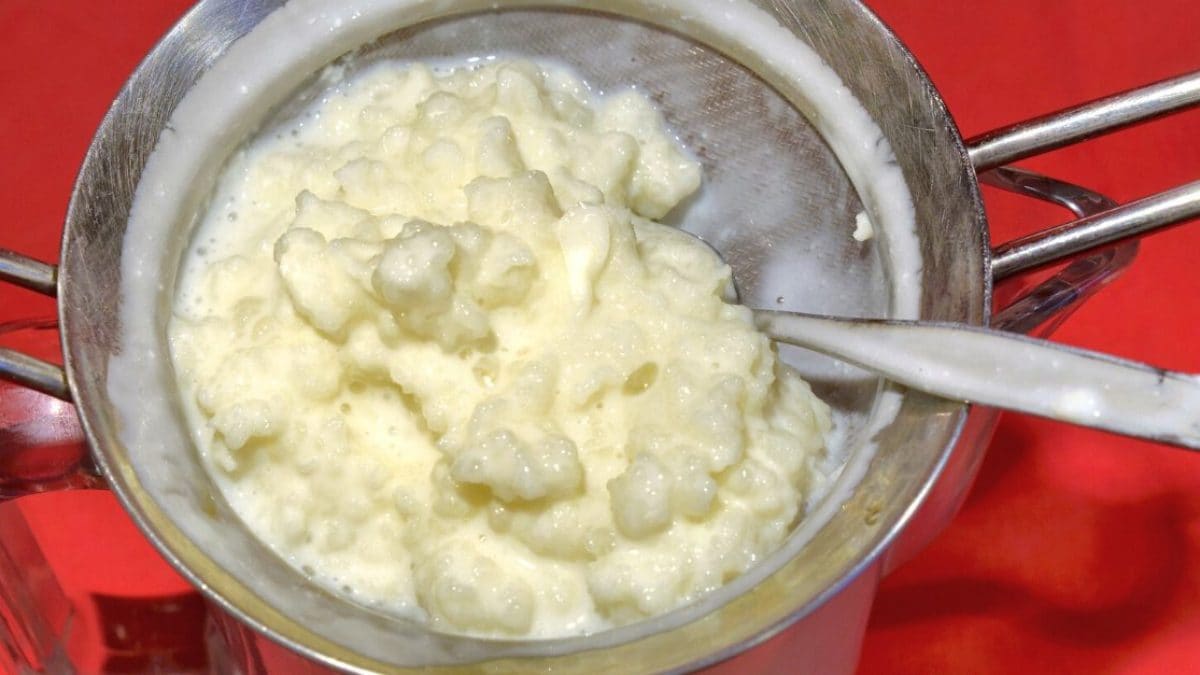
Milk is an excellent source of calcium and protein, and kefir is no exception. However, there are additional benefits of probiotics. Probiotics are known as "friendly bacteria" that can relieve IBS symptoms such as bloating and digestive problems in some people. Regular intake of kefir is also associated with benefits of blood pressure, cholesterol balance and glycemic control. Also, kefir grains may contain more than 30 strains of beneficial bacteria and yeast, depending on the variety used. Some of the most important strains are Lactobacillus-or Lactobacillus (LAB). A 250ml of whole kefir milk approximately contains 145kcal, 8.3g protein, 11g carbs, 7.5g fat, 28mg magesium, 333mg calcium, 383mg potassium and 0.7mcg B12.
Making Kefir

The process of making kefir is different from yogurt. Traditional milk kefir uses kefir grains and whole cow milk, but is now made with goat milk, sheep milk, coconut milk, and alternatives to rice and soy milk. Kefir grains are not really grains, they are small gelatinous globules that look like grains and contain a variety of bacteria and yeast. Grains are placed in glass jars or bowls, soaked in milk, covered and left at room temperature for at least 24 hours. As a result, bacteria and yeast ferment lactose (a natural sugar contained in milk) into lactic acid, which promotes the growth and growth of bacteria.
After about 24 hours at room temperature, the grains are sifted from kefir, transferred to a new batch of milk and used to continue growing again. This cycle can last indefinitely. Now you are ready to drink the tense kefir. The grains will grow as long as they are placed in fresh milk at the right temperature (ideally about 22°C – 25°C). When the product is placed in the refrigerator, fermentation is inhibited at low temperatures.

It can be made at home as far as fermentation, temperatures, fermentation times and equipment are taken into consideration.
Water kefir is made in a comparable manner to that of kefir. The kefir grains are positioned in sugared water and the equal fermentation manner occurs (as in milk). The fermentation produces useful microorganisms whilst lowering the sugar content material of the drink. It's crucial to word that the grains are different – water kefir is made with unique grains that rely upon water, and could now no longer paintings withinside the equal manner if installed milk or milk substitutes. Cane sugar or fruit juice may be used to sweeten the water. Water kefir is a fantastic opportunity to supply probiotic microorganisms for individuals who are following a dairy-unfastened eating regimen however no longer includes the equal protein and calcium content material it really is supplied via means of milk.
Some Key Benefits Of Kefir

- It helps improve digestion due to its probiotic content; the fermentation method also helps break down the lactose in milk therefore, making kefir tolerable for those who are lactose intolerant.
- It aids weight loss due to the lactobacillius species like those found in kefir.
- It helps reduce inflammation due to the anti-inflammatory and immunomodulatory effects of probiotics.
- It promotes bone health, especially the traditional kefir which is made from cow’s milk — a great source of calcium and vitamin K, reducing the risk of osteoporosis and fractures especially inn post-menopausal women.
Bottomline
The process used to make kefir can vary from brand to brand, making it difficult to monitor its effectiveness. As a result, some products may be a richer source of probiotic bacteria than others. For those unfamiliar with probiotics and fermented foods, it makes sense to start with a small amount and slowly increase. Some people report digestive discomfort such as bloating, constipation, or diarrhea when incorporating fermented foods into their diet. People with weakened immunity or histamine intolerance should consult their doctor before increasing or increasing their intake of fermented foods.
;Resize,width=767;)
